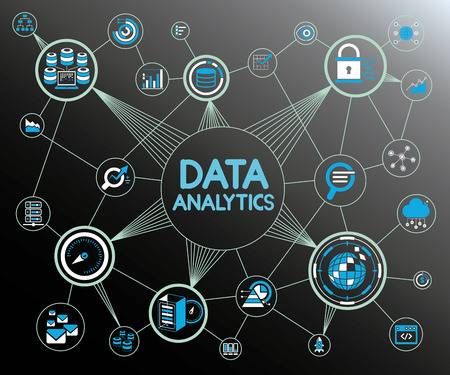Here’s a truth we don’t talk about enough: most CRMs are glorified address books.
They collect data, track transactions, maybe even trigger a few automated emails but they don’t retain customers.
And in 2025, that’s no longer good enough.
Because retention isn’t about who bought from you, it’s about knowing who’s about to leave. It’s about predicting needs before customers even realise them. It’s about building relationships at scale, without losing the human touch that made them stay in the first place.
The future of customer retention strategies in CRM is now less about storing data and more about activating it. And that’s where AI and predictive analytics are rewriting the entire playbook.
The End of “Set It and Forget It” CRMs
Let’s be honest, the average retention marketing approach hasn’t changed much in the last decade.
A new customer signs up → they get a welcome email → they receive a discount offer → maybe a reactivation campaign if they go quiet.
It’s the same tired playbook, just with fancier templates.
But the way customers behave has changed. Their expectations are different. And in 2025, they don’t want brands that react to their behaviour, they actually expect brands to anticipate it.
That’s why traditional client retention programs, especially the ones that rely on generic messaging and basic segmentation are failing. They’re too slow, too broad, and too disconnected from real human intent.
AI-powered CRM retention strategies flip that model on its head. Instead of “if customer churns → send reactivation email,” predictive systems ask, “which customers are most likely to churn and how do we intervene before they do?”
Prediction > Reaction: The New Retention Paradigm
Here’s where predictive analytics changes everything.
Traditional CRMs tell you what already happened:
- How many customers churned last month.
- What your repeat purchase rate was.
- Which email had the best click-through rate.
That’s useful but it’s all backwards-looking. It’s like driving a car by staring at the rear-view mirror.
Predictive CRMs, on the other hand, show you what’s about to happen and that changes how you operate entirely.
- They tell you which customers are most likely to churn in the next 30 days.
- Which ones are primed for a high-value upsell.
- Which segments are showing early signs of disengagement.
It’s no longer about reacting to churn, it’s about preventing it before it starts. And prevention is where real loyalty (and profit) lives.
Case Study: How Predictive Retention Works in Practice
Let’s say you’re an eCommerce skincare brand.
Traditionally, your customer retention strategy might look like this:
- Send a welcome flow.
- Nudge for repurchase at 30 days.
- Offer a discount at 60 days.
But now, imagine your CRM has predictive churn modelling built in.
The system analyses thousands of data points browsing history, order frequency, email engagement, even time spent on product pages and flags 200 customers with a 75% chance of churning within 14 days.
Instead of waiting for them to disappear, you intervene:
- A personalized check-in email goes out: “We noticed you loved our Vitamin C serum, here’s how to get the most out of it.”
- A content drip triggers with skincare routines tailored to their purchase history.
- For your highest-value customers, a loyalty manager sends a personal note and early access to a new product launch.
The result?
Churn drops by 22%. Customer lifetime value increases. And most importantly those customers feel like you see them.
That’s what predictive CRM retention strategies can do.
Human Touch at Scale: AI’s Greatest Trick
One of the biggest myths about AI in customer success retention strategies is that it replaces the human element. It doesn’t. In fact, it does the opposite, it enables it.
Here’s the truth: no retention marketing team can manually analyse behaviour patterns across thousands of customers in real-time. But AI can. And by surfacing those insights, it allows human teams to focus where they matter most: high-touch moments that deepen loyalty.
Think of it like this:
- AI identifies the “at-risk” customers.
- Predictive analytics determines the best intervention.
- Human teams (or personalised automations) deliver the right message at the right time.
It’s not replacing relationships, it’s supercharging them.
From Data to Decisions: The 5 Pillars of an AI-Driven CRM Retention Strategy
If you’re building a next-gen customer retention program in 2025, here’s the strategic framework you need to follow:
1. Behavioural Segmentation (Not Demographic)
Forget broad categories like “Women aged 25–35.” Predictive CRMs segment by intent: engagement signals, purchase cadence, browsing depth, referral activity.
This means campaigns are based on what customers are about to do, not who they are.
2. Predictive Churn Modelling
Use machine learning to calculate churn risk scores based on historical behaviour. A 65% churn likelihood is not only a number but a roadmap for intervention.
3. Dynamic Journey Mapping
Static customer journeys are dead. Modern CRMs automatically adjust messaging and touchpoints based on real time behaviour changes so every user feels like the journey was built just for them.
4. Triggered Retention Playbooks
When risk levels spike, action happens instantly: loyalty rewards, education content, personal outreach, or exclusive offers. These aren’t manual tasks, they’re automated workflows informed by AI.
5. Closed-Loop Feedback
Every campaign feeds back into the model, improving prediction accuracy and personalisation over time.
Case Study: B2B CRM Retention in Action
It’s not just eCommerce that’s being transformed, B2B client retention programs are evolving too.
Take a SaaS platform targeting enterprise clients. Historically, customer success teams relied on quarterly check-ins and NPS surveys to measure satisfaction.
But by integrating predictive analytics into their CRM, they can now:
- Flag accounts where usage has dropped by 20% over the last month.
- Detect when a key decision-maker has gone quiet.
- Identify accounts with high upsell potential based on feature adoption trends.
Armed with that data, the customer success team reaches out before the renewal conversation, not after. They solve problems before they become churn reasons and in doing so, they turn potential losses into long term contracts.
Why Personalisation Is Now Non-Negotiable
Here’s the uncomfortable reality: automation without personalisation is just spam at scale.
In 2025, the best customer retention strategies go beyond a “first name” token in an email. Predictive CRMs enable truly contextual engagement; the kind that feels like it was handcrafted for that customer.
- Instead of “We miss you,” they say, “Your last purchase of our peptide serum was 45 days ago, restock before you run out completely”
- Instead of “Check out our new collection,” they say, “Because you bought linen trousers last spring, here’s what pairs perfectly this season.”
When messaging feels that relevant, customers bond.
Retention Marketing in the Age of AI: A New Mindset
The biggest shift happening right now is more philosophical.
Retention used to be a side quest: something you focused on after acquisition. Today, it’s the core of sustainable growth.
And the brands winning in 2025 aren’t the ones with the biggest budgets, they’re the ones who know their customers best. They’re the ones who stop treating CRM as a database and start using it as a decision engine.
They’re the ones who understand that data isn’t the goal, relationships are.
Building Your 2025 CRM Retention Roadmap
If you’re ready to future-proof your customer retention program, here’s where to start:
- Audit your current CRM workflows. Are they reactive or predictive?
- Integrate predictive analytics tools (many modern CRMs now have this built in).
- Re-segment your customer base by behavioural intent, not demographics.
- Build automated retention playbooks triggered by churn risk scores.
- Layer in human touchpoints where they’ll have the highest emotional impact.
Remember: the goal isn’t to predict the future, it’s to shape it.
Final Thoughts: The Age of Intelligent Loyalty
The next wave of CRM retention strategies is about working smarter.
AI and predictive analytics don’t replace the fundamentals of loyalty: trust, value, human connection. They amplify them. They allow businesses to see around corners, to meet customers before they even arrive, to turn every interaction into an opportunity to deepen the relationship.
And in a world where acquisition costs are rising and attention spans are shrinking, that’s not just an advantage, it’s survival.
2025 will belong to the brands that stop guessing and start predicting.
Because the future of retention isn’t about who you hope will stay.
It’s about knowing and acting before they ever think about leaving.




